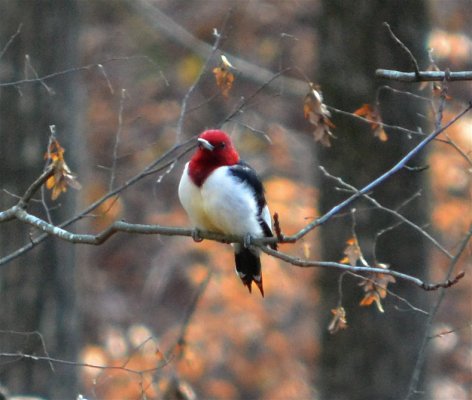As we sit and look out our windows, or sit on the back deck contemplating all of the financial machinations we need to go through to stay FIREd, I wonder if we all take the time to enjoy the natural world we live in.
Towards that end, what birds are you seeing, right now, in your backyard?
We love watching the birds, especially in the winter when we're stuck indoors more. That being the case, I've set up nine feeders of various types that we can see from our warm confines, and view our feathered friends as they feed and frolic around.
On any given winter day, our visitors almost always include:
Several pairs of Cardinals
Typically 4 or 5 Blue Jays
a few Goldfinches (but not nearly as many as usual)
Purple Finches
Tufted Titmouse
Pileated Woodpeckers
Red Headed Woodpeckers
Juncos
Several Morning Doves
Several different kinds of Sparrows
Chickadees of various types
Nuthatches
....and a Red Tail Hawk looking for it's dinner ON the feeders! BAH!!!

And of course the grackles and cowbirds that try to take over the feeders, but usually end up just scattering the seed onto the ground where the other birds (and [-]bushy tail tree rats[/-] squirrels) scarf it up!
If we're outside, overhead we also normally see Turkey Vultures, various hawks, Mallards, and Canada Geese.
If we take a ride down to the river at this time of year, we'll see a dozen or more Bald Eagles 'fishing' for dinner. In fact at Starved Rock State Park about 10 miles downstream from us, this is "Eagle Watch Weekend". There are usually several hundred visitors from Chicago and the 'burbs that come down to get a look at those majestic birds. Before I ER'd, I worked on the south bank of the river, and in the winter we'd have dozens of Bald Eagles in the trees overlooking the river at our plant. It was normally the only place along the river for miles that was not frozen over, due to the millions of gallons of processed water we put in everyday, and the fish and birds of prey were both in abundance!!! We could walk within 15 or 20 feet of the eagles, and they wouldn't fly off!!! It was way too cool!!!







